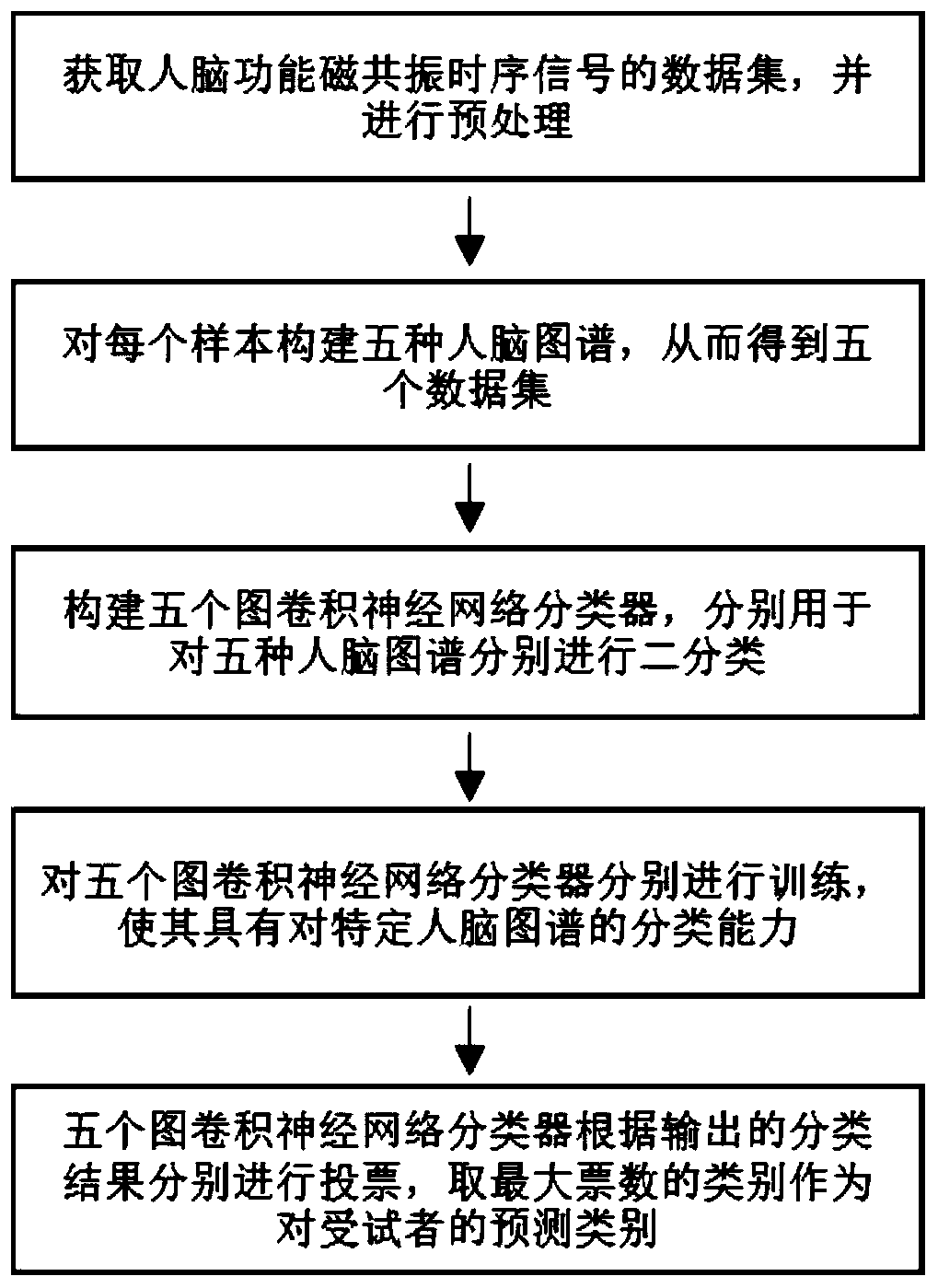Subject classification method fusing multiple human brain atlases based on graph convolutional neural network
A technology of convolutional neural network and classification method, applied in the direction of neural learning method, biological neural network model, neural architecture, etc., which can solve the classification performance of limited classification models, single functional connection strength index, model classification accuracy and generalization performance Restrictions and other issues
- Summary
- Abstract
- Description
- Claims
- Application Information
AI Technical Summary
Problems solved by technology
Method used
Image
Examples
Embodiment
[0069] This embodiment discloses a subject classification method based on the fusion of multiple human brain atlases based on graph convolutional neural networks. Five graph convolutional neural network classifiers are used to perform binary classification on five human brain atlases, and the results Perform vote fusion to achieve prediction and classification of subjects. This classification method includes the following steps:
[0070] S1. Obtain a data set of functional magnetic resonance time-series signals of the human brain. Each sample in the data set is a collection of functional magnetic resonance time-series signals of various brain regions in a subject's brain, denoted as x, and the i-th in the sample The time series of each brain area is denoted as x i , describe the activity state of the brain area within a certain time range, and preprocess the data set, wherein the preprocessing is to make sample labels and balance the number of samples between classes;
[007...
PUM
 Login to View More
Login to View More Abstract
Description
Claims
Application Information
 Login to View More
Login to View More - R&D
- Intellectual Property
- Life Sciences
- Materials
- Tech Scout
- Unparalleled Data Quality
- Higher Quality Content
- 60% Fewer Hallucinations
Browse by: Latest US Patents, China's latest patents, Technical Efficacy Thesaurus, Application Domain, Technology Topic, Popular Technical Reports.
© 2025 PatSnap. All rights reserved.Legal|Privacy policy|Modern Slavery Act Transparency Statement|Sitemap|About US| Contact US: help@patsnap.com



